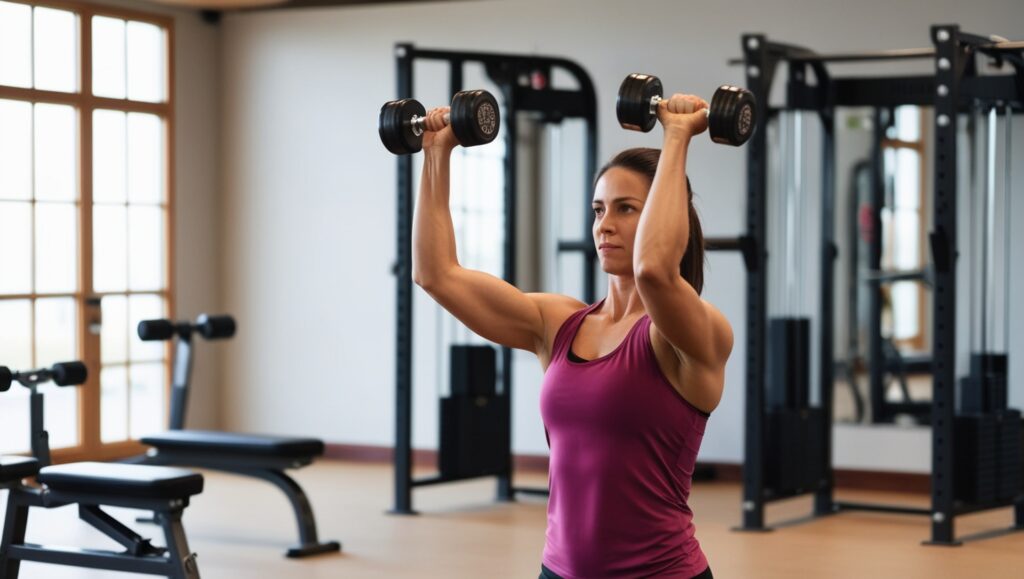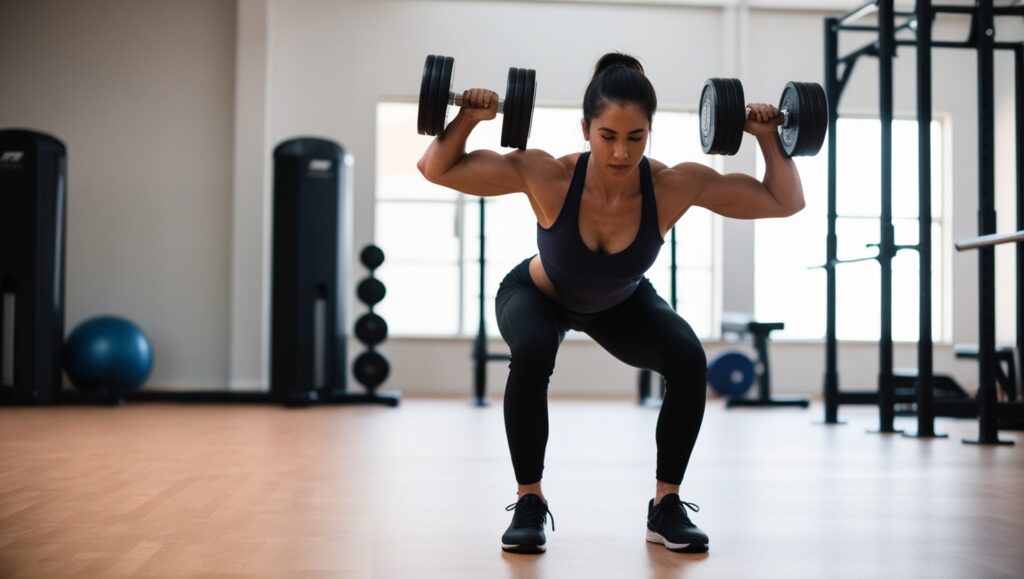The dumbbell wide squat is an excellent exercise for strengthening the lower body, improving mobility, and enhancing overall fitness. This variation of the squat effectively targets the quadriceps, hamstrings, glutes, and inner thighs, making it an essential movement for those aiming to build functional strength. Whether you are a beginner or an experienced lifter, incorporating the dumbbell wide squat into your workout can yield impressive results.
Dumbbell Wide Squat
Benefits of Dumbbell Wide Squat
The dumbbell wide squat offers numerous benefits beyond just building strength. Here are some of the top advantages of incorporating this exercise into your routine:
- Targets Multiple Muscle Groups: Engages the glutes, quadriceps, hamstrings, and adductors (inner thighs) simultaneously.
- Enhances Hip Mobility: The wide stance allows for greater hip opening, improving flexibility and reducing stiffness.
- Improves Core Stability: Holding a dumbbell adds resistance, forcing your core to stabilize throughout the movement.
- Reduces Knee Strain: Compared to traditional squats, a wider stance can help distribute weight more evenly, reducing pressure on the knees.
- Builds Functional Strength: Mimics real-life movements, helping to improve overall balance and coordination.
Now, let’s break down the movement into technique, variations, common mistakes, and how to integrate it into your workout plan.
How to Perform Dumbbell Wide Squat with Proper Form
Executing the dumbbell wide squat with proper form is crucial to prevent injuries and maximize effectiveness. Follow these step-by-step instructions:
- Set Your Stance: Stand with your feet wider than shoulder-width apart and your toes slightly pointing outward. The wider stance allows better engagement of the inner thighs and glutes.
- Hold the Dumbbell: Grasp a dumbbell with both hands and hold it at chest level or let it hang between your legs (goblet-style or sumo-style grip).
- Brace Your Core: Engage your core muscles to maintain stability throughout the movement.
- Lower Your Body: Push your hips back and bend your knees to lower into a squat position. Keep your chest up and maintain a neutral spine.
- Depth Matters: Aim to lower until your thighs are parallel to the ground or slightly below. Ensure that your knees stay aligned with your toes.
- Drive Back Up: Press through your heels to return to the starting position while squeezing your glutes at the top.
- Controlled Movement: Perform the exercise slowly and with control to maximize muscle engagement and prevent injury.
Dumbbell Wide Squat Variations for Better Results
To keep your workouts engaging and challenging, try incorporating different variations of the dumbbell wide squat:
1. Goblet Dumbbell Wide Squat
- Hold a single dumbbell close to your chest with both hands.
- Helps improve posture and keeps the torso upright.
- Ideal for beginners learning squat mechanics.
2. Sumo Dumbbell Wide Squat
- Use a heavier dumbbell and let it hang between your legs.
- Focuses more on the inner thighs and glutes.
- Great for those looking to enhance lower body strength.
3. Dumbbell Wide Squat with Pulse
- After reaching the bottom of the squat, perform small pulses before rising.
- Increases time under tension, leading to greater muscle activation.
- Perfect for adding intensity to leg day workouts.
4. Dumbbell Wide Squat to Calf Raise
- Perform a dumbbell wide squat and, at the top, rise onto your toes for a calf raise.
- Engages the calves, improving balance and coordination.
- Excellent for full lower-body development.
Common Mistakes to Avoid While Performing Dumbbell Wide Squat
Even though the dumbbell wide squat is a simple exercise, common mistakes can reduce its effectiveness and increase injury risk. Here’s what to watch out for:
1. Poor Knee Alignment
- Ensure your knees track in line with your toes and do not cave inward.
- This helps prevent unnecessary strain on the knee joints.
2. Rounding the Back
- Maintain a neutral spine and avoid hunching your shoulders.
- Engage your core to support proper posture.
3. Not Squatting Deep Enough
- Aim for at least parallel depth to maximize muscle activation.
- Shallow squats may limit results and muscle engagement.
4. Using Excessive Weight
- Start with a manageable dumbbell weight and gradually increase as your strength improves.
- Proper form is more important than lifting heavy.
How to Incorporate Dumbbell Wide Squats into Your Workout Routine
The dumbbell wide squat can be added to your workout program in multiple ways, depending on your fitness goals:
For Strength and Muscle Building
- 4 sets of 8-12 reps with a heavier dumbbell
- Focus on slow, controlled movements and proper depth
For Endurance and Fat Loss
- 3 sets of 15-20 reps with moderate weight
- Combine with other lower-body exercises like lunges or deadlifts
As Part of a Full-Body Workout
- Perform 3-4 sets of 12 reps, alternating with upper body movements
- Example circuit: Dumbbell wide squats → Push-ups → Dumbbell rows → Plank
As a Warm-Up or Mobility Drill
- Use a light dumbbell and perform 2 sets of 15 reps to activate lower body muscles before heavy lifting
- Helps improve hip mobility and prepares the body for more intense exercises
Final Thoughts on Dumbbell Wide Squat
The dumbbell wide squat is a powerful and effective exercise for building lower body strength, enhancing mobility, and improving overall fitness. By performing it with proper form, incorporating variations, and avoiding common mistakes, you can maximize its benefits. Whether you’re a beginner or an advanced lifter, adding this exercise to your workout routine will contribute to stronger legs, better stability, and improved functional movement.
Start integrating the dumbbell wide squat into your fitness plan today and experience the incredible lower-body gains it offers!




